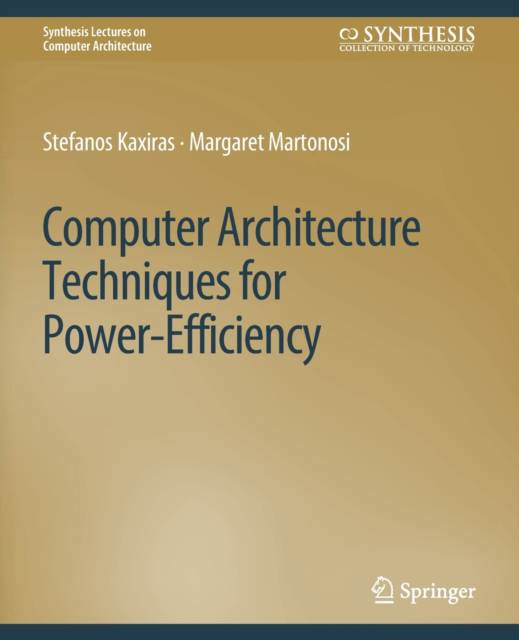
- Retrait gratuit dans votre magasin Club
- 7.000.000 titres dans notre catalogue
- Payer en toute sécurité
- Toujours un magasin près de chez vous
- Retrait gratuit dans votre magasin Club
- 7.000.0000 titres dans notre catalogue
- Payer en toute sécurité
- Toujours un magasin près de chez vous
57,95 €
+ 115 points
Description
In the last few years, power dissipation has become an important design constraint, on par with performance, in the design of new computer systems. Whereas in the past, the primary job of the computer architect was to translate improvements in operating frequency and transistor count into performance, now power efficiency must be taken into account at every step of the design process. While for some time, architects have been successful in delivering 40% to 50% annual improvement in processor performance, costs that were previously brushed aside eventually caught up. The most critical of these costs is the inexorable increase in power dissipation and power density in processors. Power dissipation issues have catalyzed new topic areas in computer architecture, resulting in a substantial body of work on more power-efficient architectures. Power dissipation coupled with diminishing performance gains, was also the main cause for the switch from single-core to multi-core architectures and aslowdown in frequency increase. This book aims to document some of the most important architectural techniques that were invented, proposed, and applied to reduce both dynamic power and static power dissipation in processors and memory hierarchies. A significant number of techniques have been proposed for a wide range of situations and this book synthesizes those techniques by focusing on their common characteristics. Table of Contents: Introduction / Modeling, Simulation, and Measurement / Using Voltage and Frequency Adjustments to Manage Dynamic Power / Optimizing Capacitance and Switching Activity to Reduce Dynamic Power / Managing Static (Leakage) Power / Conclusions
Spécifications
Parties prenantes
- Auteur(s) :
- Editeur:
Contenu
- Nombre de pages :
- 207
- Langue:
- Anglais
- Collection :
Caractéristiques
- EAN:
- 9783031005930
- Date de parution :
- 25-06-08
- Format:
- Livre broché
- Format numérique:
- Trade paperback (VS)
- Dimensions :
- 190 mm x 235 mm
- Poids :
- 385 g

Les avis
Nous publions uniquement les avis qui respectent les conditions requises. Consultez nos conditions pour les avis.






